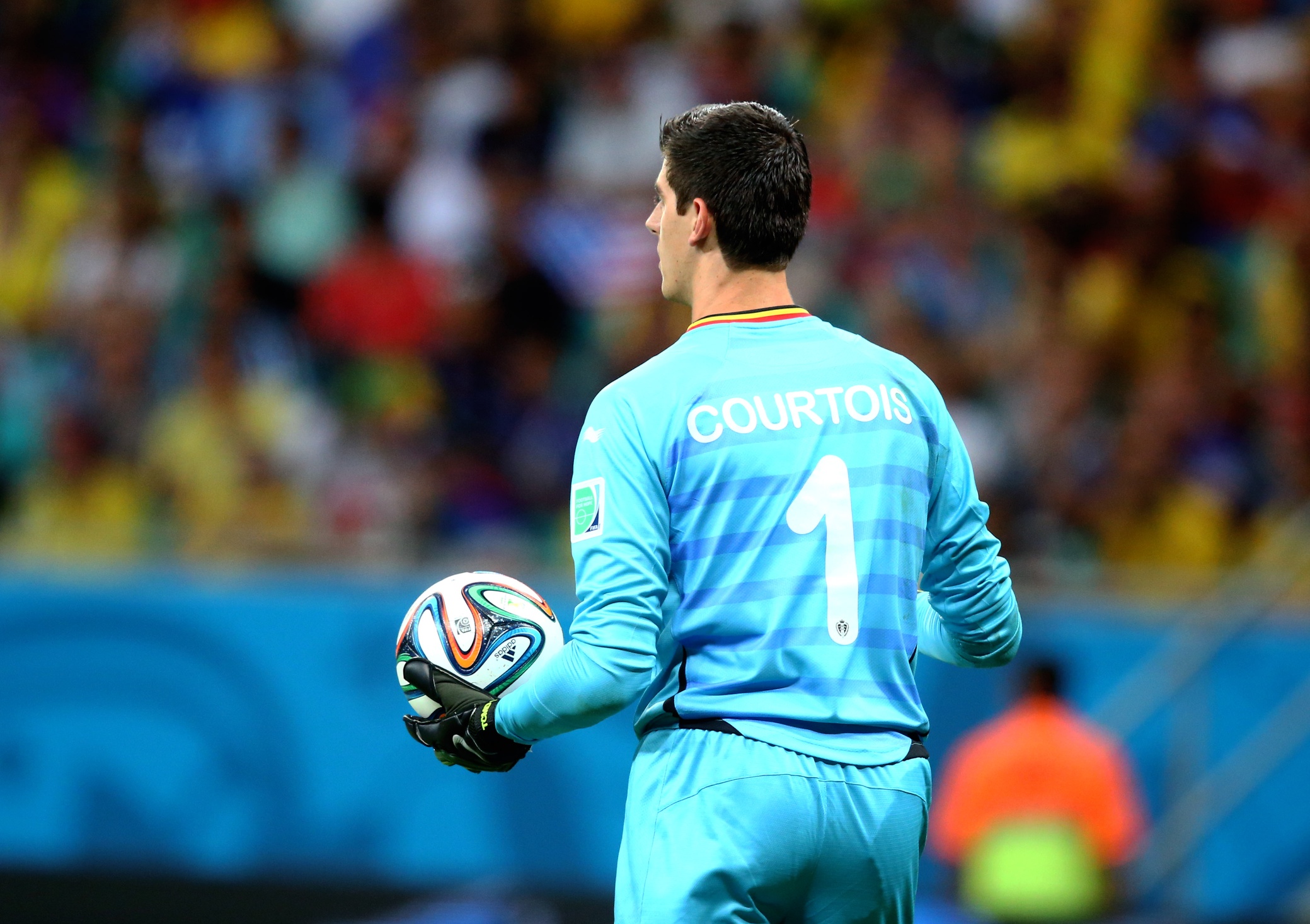How to Play Daily Fantasy Soccer
Whether you’re a big fan of the beautiful game or you are just getting started, you for some reason or another found yourself interested in playing some daily fantasy soccer.
Soccer as a sport is very simple; kick the ball, knock it into the net, win the game. Simple right? Well, DFS soccer can appear to be more complicated than that. With the myriad of statistics to choose from, and the requirement to select eleven different players at various positions, the game can appear daunting.
The good news is that finding success in daily fantasy soccer is achievable. The better news is that I’m going to give you the starting point to get the ball rolling when you start building your lineups.
Lineup Construction
The object of the game is to build the best lineup that scores the most points, simple enough right? So what goes into constructing a lineup? A soccer lineup consists of 11 players, broken down as follows, one goalkeeper (GK), three defenders (DEF), three midfielders (MID), two forwards (FOR) and two utility players (UTIL). Utility players can be any of the field positions (DEF, MID, FOR).
As for scoring, you get points for goals, assists, shots, shots on target, crosses, interceptions, tackles, and fouls drawn for the field players, while a GK gets points for a save, a clean sheet and a win. You also lose points for committing a foul, a yellow card and a red card for field players, while goalkeepers lose points for conceding a goal. For a more comprehensive look at the scoring on DraftKings, check out the image below.

Selecting Goalkeepers
Selecting goalkeepers can seem very simple and straightforward. You pick the goalkeeper with the biggest chance at a win and clean sheet. That guarantees ten fantasy points and gets you off to a good start. There are two problems with this approach.
1. Variance will get you a good bit of the time as a heavily favored GK can face a shot on target just once in a game, and that one shot may result in a goal scored immediately taking away the clean sheet, and dropping the win bonus from five points to just 3. DraftKings also does dynamic pricing on goalkeepers, meaning that previous performance matters little in their pricing algorithm, thus the keepers with the biggest odds to win are always the most expensive on the board. You’ll never want to pay top dollar for a keeper only to get three points obviously.
2. As alluded to in point one, heavy favorites rarely face the type of workload that can pay off their big salary. Teams that are heavily favored can only face 2-3 shots on target the entire match through counter attacks, these can amount to 4-6 points, and unless the team finishes with a clean sheet, you’ll be looking at a max score of 7-11 points for your top dollar goalkeeper.

For cash games, selecting the safest goalkeeper (provided you can fit them in your lineup) is the way to go, it provides the safety net you need and the guaranteed points to focus on other parts of your lineup. For tournaments and GPPs however, I believe that a better way to target keepers is through targeting teams that may not be favorites to get the win or the clean sheet, but may face a higher number of targets that may result in more save opportunities for a goalkeeper. My primary objective with a keeper is to find those who have these qualities:
- They’re at home.
- They’re slight underdogs.
- Their team has a reasonable chance at scoring an early goal, leading to the opponent pushing hard to try to reach an equalizer.
Selecting Defenders
Most teams around the world play a formation with different variations of four defenders, few teams still play with five defenders, and fewer still play with just three. Each formation has its merits, and we won’t get into why a team would choose different strategies (but you can hit me up on twitter and I’ll be happy to talk soccer strategy with you). The important thing to note however is that regardless of how many defenders a team chooses most of them won’t be worth rostering in your DFS lineups. That’s a sad and unfortunate truth and a result of the scoring system in DK that heavily weighs scoring and attacking moves (and why shouldn’t it? Scoring is fun.)
So which defenders can we pick for DFS?

Full backs offer up the most value for defenders in DFS, the full back position is the “wing defender” in soccer, these are the players on the outside flanks who are given the freedom to roam up and down the field and can power in crosses. At times these players are also on set piece duties and can take corners as well amplifying their crossing potential. Full backs on teams that are expected to win tend to be more valuable than full backs on underdogs.
The other two statistics that can be useful when evaluating defenders are tackles won and passes intercepted. Beyond playing a part as somewhat defining characteristics for defenders in general, they also earn you fantasy points. With one point for a tackle won and 0.5 points for an interception they allow you to potentially target center backs (defenders in the middle of the formation, right in front of goal) as they can deliver some added value. If a center back also steps up on free kicks and set pieces for their header ability, that player carries extra value that can be used.
Selecting Midfielders
The foundation of all your lineups should come from the midfield. Much like real life soccer, a strong midfield can be used to control the tempo of play and can result in a team either succeeding or failing at their goal of winning the game. In DFS a good midfield can give you the floor needed to catapult you to the top of the standings or win your 50/50s.
The reason I say that midfielders are the foundation of cash game lineups is because of crosses. If you haven’t noticed yet, crosses are the most reliable statistic in daily fantasy soccer. DraftKings counts both successful and unsuccessful crosses, including corners, while other sites like Yahoo only count successful ones. Most teams assign a specific player to take corners and that player tends to also be responsible for crosses into the box during play. You’ll often find that one player on a team has a disproportionate number of crosses that can reach double digits. When this happens you are guaranteed double digit points from a single player without factoring in any other statistics. Crosses also play a vital role in the offense as plenty of teams rely on them for header opportunities, especially if a team is vulnerable in the air. These can result in goals, and an assist to the crosser.

Another aspect in midfielders to consider is the holding midfielder and their potential for tackles won and passes intercepted. Similar to the center backs, a holding midfielder (sometimes referred to as the pivot or the “6”) has the duty to be very good defensively, this results in the increase reliance on tackles and interceptions. A good defensive midfielder can actually get between 5 and 10 fantasy points just on defensive stats if in the right situation, but these situations are few and far between.
Overall, targeting midfielders who excel at crosses and take set pieces is the most reliable way to build your fantasy teams and on most slates you can find several of these key midfielders to build your lineups around while looking for value elsewhere.
Selecting Forwards
Selecting forwards is likely the easiest to explain, while also being the toughest to predict. You need to select the forwards who will score the goals. Goals count for ten points, with a shot on target worth two (one point for the shot, and one point for the shot on target) effectively putting the goal value at 12 points. Having the player who scores a brace (two goals) or a hat-trick (three goals) on your team can result in a very good DFS night. So needless to say, pinpointing the right forward is important for a very good tournament lineup.
While forwards have the highest ceiling if in the right situation, they also carry very low floors as their play sometimes is very dependent on scoring that one goal that they spend the majority of the game running around looking for the perfect shot. Often times, only getting as little as two or three shots in the entire game. A world class goal scorer can finish a game in which his team scores two or three goals with less than ten fantasy points if they don’t manage to score a goal.

There are some players listed as forwards who also manage to get a good number of crosses in or even take plenty of shots. Another aspect to consider is that most teams have a well defined penalty kick taker that takes every penalty kick for the team. This means that if a team gets a penalty, you’re guaranteed a greater than 70% chance that your player will score a goal. Be careful however as not all teams utilize their forward for these situations, a lot of teams use a midfielder or even a defender to take penalty kicks (thus catapulting that MID or DEF value)
Selecting a Utility Player
The utility player in soccer is an interesting concept as it effectively allows you to vary your formation to adapt to each slate and each tournament type. For cash games I like to select two midfielders in my utility spots as a high floor low variance approach. For tournaments, you can go with two forwards, especially if there are some value options on the board that tend to make roster construction easier.
Putting it all together
This is a lot of information, but if you’re new to daily fantasy soccer and want to get a start, I believe this is VITAL in your introduction. Putting it all together, building a team is a four-step process for me.
•Pinpoint the teams with the greatest chances of winning. Selecting goalkeepers and forwards from these teams.
•Identify the top crossers and corner kick takers for each team, rank them based on expected game flow. This should identify midfielders and/or fullbacks (defenders) to target.
•Build an initial team that utilizes team news from manager press conferences on Friday morning. (Managers tend to give a press conference on Fridays with details on injuries and squad rotations)
•Wake up Saturday morning (for EPL) and watch for lineups to be released one hour before the games kick off. Use this time to identify if any players are not starting (those are taken out of the lineup), look for value players in opportunistic positions, make last minute lineup adjustments.
As always, if you have any questions hit me up on twitter.